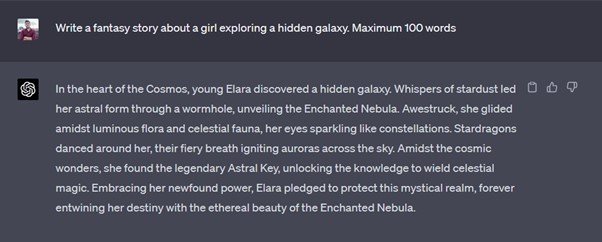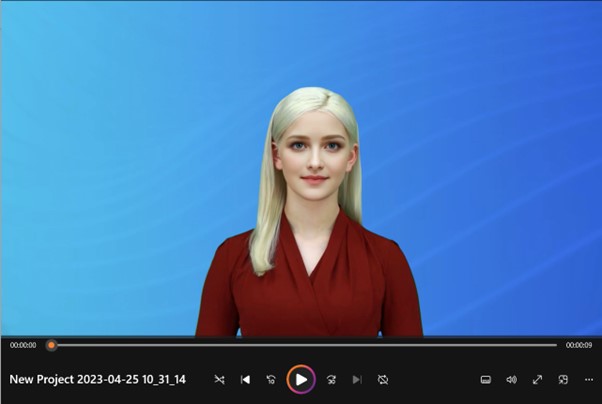Full Stack Development Internship Program
- 29k Enrolled Learners
- Weekend/Weekday
- Live Class
Once thought to be impossible, having human-like conversations with AI is now a reality, all thanks to the incredible advancements in Generative AI. This groundbreaking technology has revolutionized the way we interact with machines, ushering in a new era of seamless human-machine collaboration. There are many more examples that have taken over the internet and sparked curiosity among people. Examples such as OpenAI’s ChatGPT, which generates human-like text, and MidJourney.AI, which creates strikingly realistic images, demonstrate the remarkable capabilities of Generative AI, capturing the interest of researchers, practitioners, and enthusiasts around the world.
In this blog, we will explore the fascinating world of Generative AI to help you better understand its capabilities and potential.
The concept of Generative AI is not something new, it has been around for decades in various forms. The first-ever chatbot ELIZA is considered the earliest example of Generative AI. Even though Generative AI has been around for a long time, it has come into the limelight in 2014 with the introduction of Generative Adversarial Networks (GANs). GANs have enabled generative AI to create highly realistic and diverse outputs in various formats like images, videos, audio, and text. Since then, generative AI has gained significant attention and has become a rapidly evolving and exciting area of research and development.
Generative AI is a subset of artificial intelligence (AI) that focuses on creating original and realistic content, such as text, images, or audio. Generative AI algorithms use training data to generate new content that resembles the original data. Some of the most advanced generative AI algorithms use deep learning techniques and large amounts of unlabeled data to detect underlying patterns and create highly realistic outputs. From generating realistic images and videos to producing natural-sounding speech and text, Generative AI has found applications in various domains. For instance, companies like OpenAI, ChatGPT, and MidJourney.AI are utilizing generative AI to build powerful models that can generate human-like text and other types of content.
Models of Generative AI:
Generative AI models are a type of artificial intelligence (AI) algorithm that is designed to generate new, original content. These models use machine learning techniques, such as deep neural networks, to learn patterns and relationships within a given dataset, and then use this knowledge to create new content.
Generative AI is shaping the future across various domains, and its influence on our lives is set to grow exponentially. Embracing this powerful technology will open doors to unimaginable possibilities, ushering in a new era of creativity, efficiency, and progress. Let’s delve into some of its uses:

AI-Generated Image Source: MidJourney.AI
This is an AI image generated by MidJourney.AI Tool for the Prompt: “A futuristic painting that explores the theme of space travel, using a cool metallic color palette of silver, grey, and blue. The painting style should feature sleek and streamlined designs, capturing the futuristic qualities of technology and space travel. The cool metallic color palette will give the painting a high-tech and sophisticated feel, evoking the wonder and excitement of exploring new frontiers.”


Example of Language Translation by ChatGPT

The various use cases mentioned above are merely a small sample of its immense potential. With the rapid advancement of technology, we can expect to witness the emergence of countless more applications that will revolutionize industries and solve complex problems. The possibilities for Generative AI are truly limitless. If you’re curious about what Generative Adversarial Networks or Variational Autoencoders are, you can join our Generative AI course for a detailed explanation of these techniques.
Future Development:
This field is rapidly developing with ongoing advancements and innovations. Here are some potential future developments that can be expected are:
Limitations:
Even though Generative AI has revolutionized the industry, it has some concerns:
Generative AI has immense potential to revolutionize industries and inspire creativity. As technology advances, we can expect more sophisticated models and applications. However, it is crucial to address ethical concerns, limitations, and potential misuse. To fully harness the potential of this technology, we need to foster collaboration, transparency, and ethical considerations. By doing so, we can pave the way for a future marked by enhanced human-machine collaboration and boundless innovation.
If you’re interested in exploring the field of AI and its applications, the Artificial Intelligence Certification Course can provide a solid foundation. Additionally, for those specifically interested in learning about generative AI tools and its applications, the ChatGPT-4 Complete Course: Beginners to Advanced is a valuable resource to consider. Advance your career in AI with specialized AI agents course, focusing on building and deploying autonomous AI solutions.
Related Post: Generative models outputs